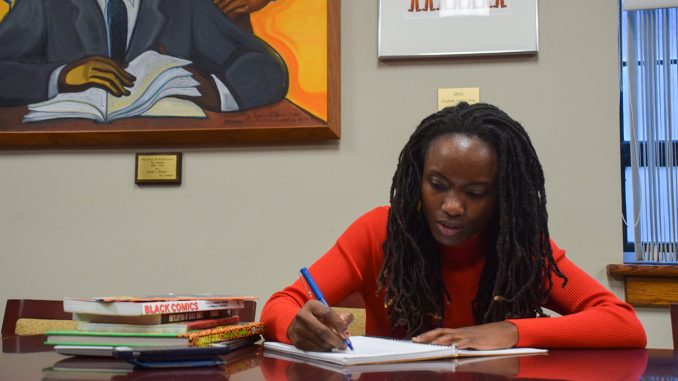
In education, a picture is worth a 1000 words, said Aslaku Berhanu, a librarian at Temple.
“When they see the images and illustrations, they want to know who is this person, what did he do?” she added.
Berhanu is working on Charles L. Blockson Afro-American Collection’s new project to develop a graphic novel called “Black Lives Have Always Mattered: Hidden African American Philadelphia of the Twentieth Century.” The project aims to educate people and eradicate stereotypes of the Black community. It will include illustrations and photographs of significant Black individuals, said Diane Turner, curator at Temple University Libraries.
“Oftentimes there is this idea that African Americans aren’t achieving or contributing to society because what is covered in the larger media is often has to do with crime or poverty,” Turner said.
The graphic novel is expected to be completed in April 2021, and will be printed and distributed to Philadelphia school district’s high schools and in the collection. The Charles Library will host a preview exhibition of the project in March 2020, Turner added.
The Blockson Collection in Sullivan Hall owns more than 500,000 materials, like books and sheet music, relating to the history and culture of people of African descent. Charles Blockson, a historian from Norristown, Pennsylvania, donated the collection to Temple in 1984 because he felt Temple had a diverse environment, according to the collection’s website.
The project will highlight the lives of different African-American individuals, like opera singer Marian Anderson and activist Cecil B. Moore, Berhanu said.
“Philadelphia was one of the cities where there was a large well-educated, well to do, free African American societies that hugged this achievements that they made in regards to churches, schools, hospitals,” she added.
Not everything included in the graphic novel will be sourced from the collection, but readers can visit the collection to find out more information on the individuals, Turner said.
“We just want to bring out the history, the culture and the accomplishments that Africans Americans have made to the development of this city,” Berhanu said.
Sheena Howard, the novel’s lead writer, and Eric Battle, the project’s curator and art director, were selected by Turner and Berhanu to work on the project.
Battle is collaborating with Philadelphia artists to bring African-American stories to life in the novel, he said.
“Some of them are comic-book artists, some of them are not necessarily, but the artistic talents will bring some of these stories,” Battle said.
Berhanu and Turner started collecting materials and planning the novel in 2016 but received a grant from the Pew Center for Arts and Heritage to begin working on it last year.
This is the only graphic novel to profile African-American Philadelphians, Turner said.
Turner hopes the images and illustrations in the novels will prompt people to ask more questions about the individuals.
Jayla Williams, a junior global studies major, said she thought the project will be good for younger generations, like high school students.
“It’s a really unique way of getting out the information about African-American history and representatives,” she added.
It is important to show younger people the individuals who were able to make success against great odds, Turner said.
“If they see what has been done in the past, oftentimes you don’t have to reinvent the wheel, and you don’t get discouraged,” she added. “It should be a source of inspiration.”
Turner wants people to connect with history and by doing so, the collection may receive another grant to be able to expand to a second volume.
“The African-American community has always been very diverse, and despite institutional racism and lack of opportunities based on race, there have always been African Americans who had been able to achieve,” Turner said. “As American citizens, they have the same American dreams but we don’t hear about these individuals as much as we would like to.”


Be the first to comment